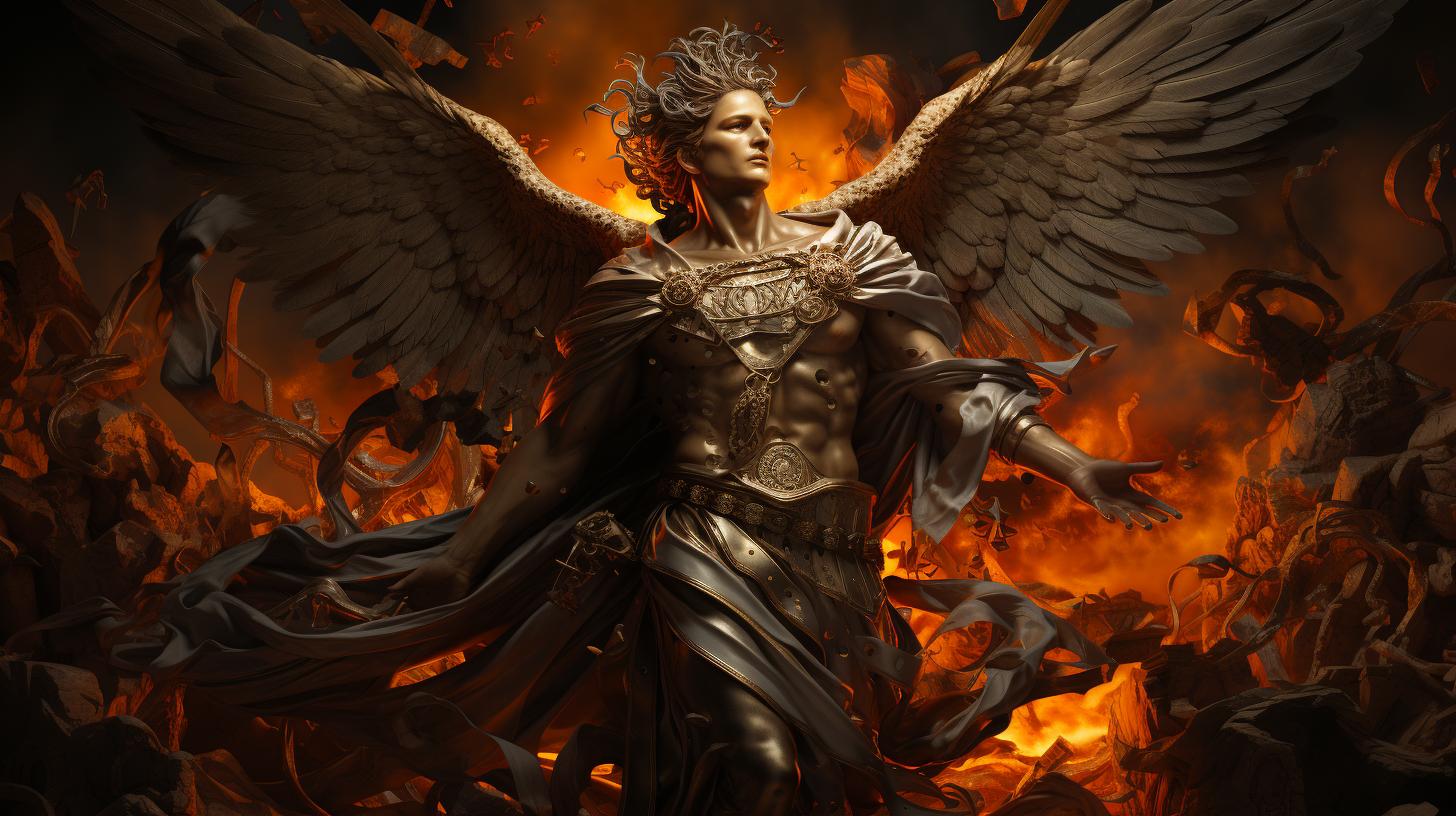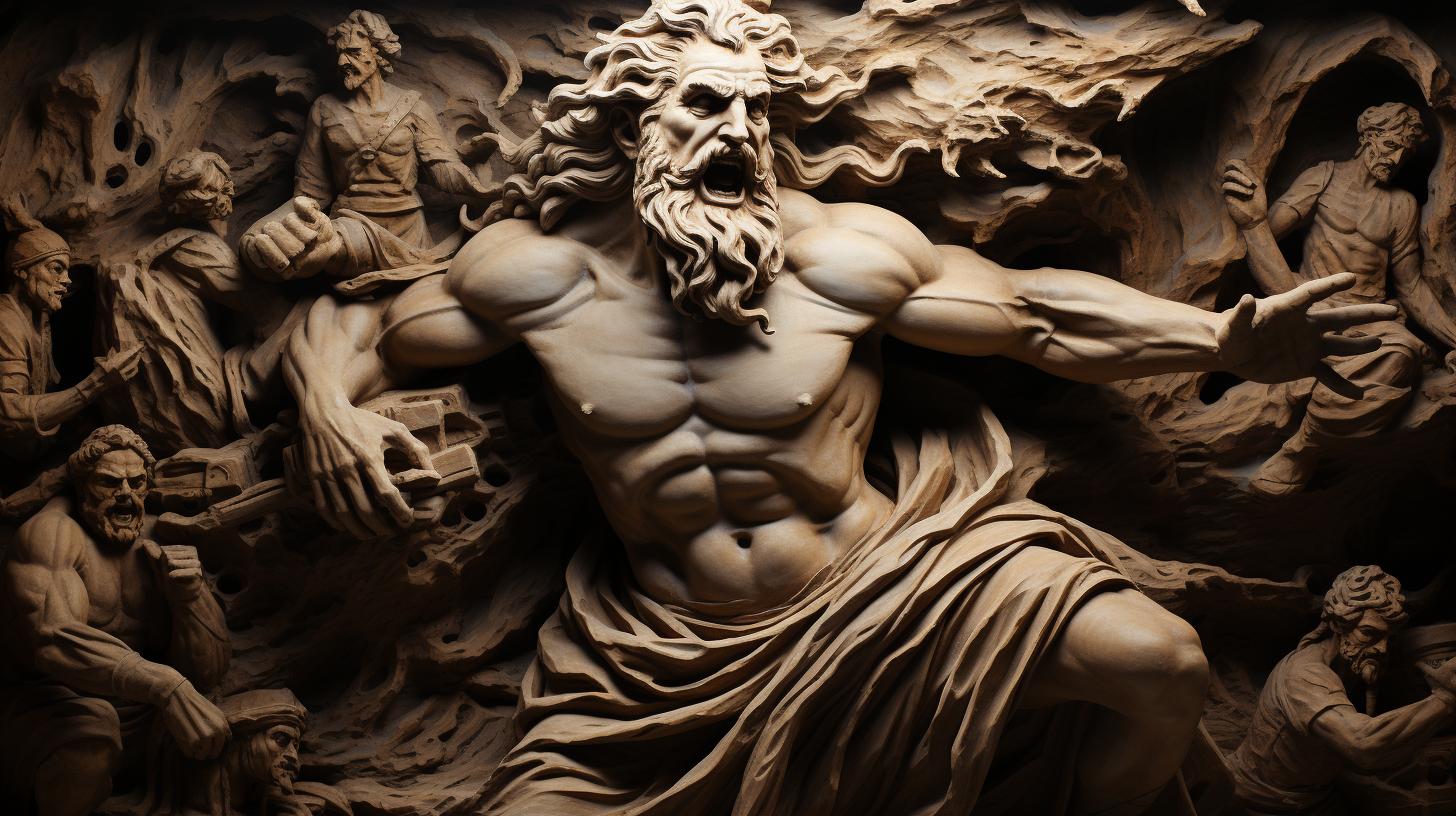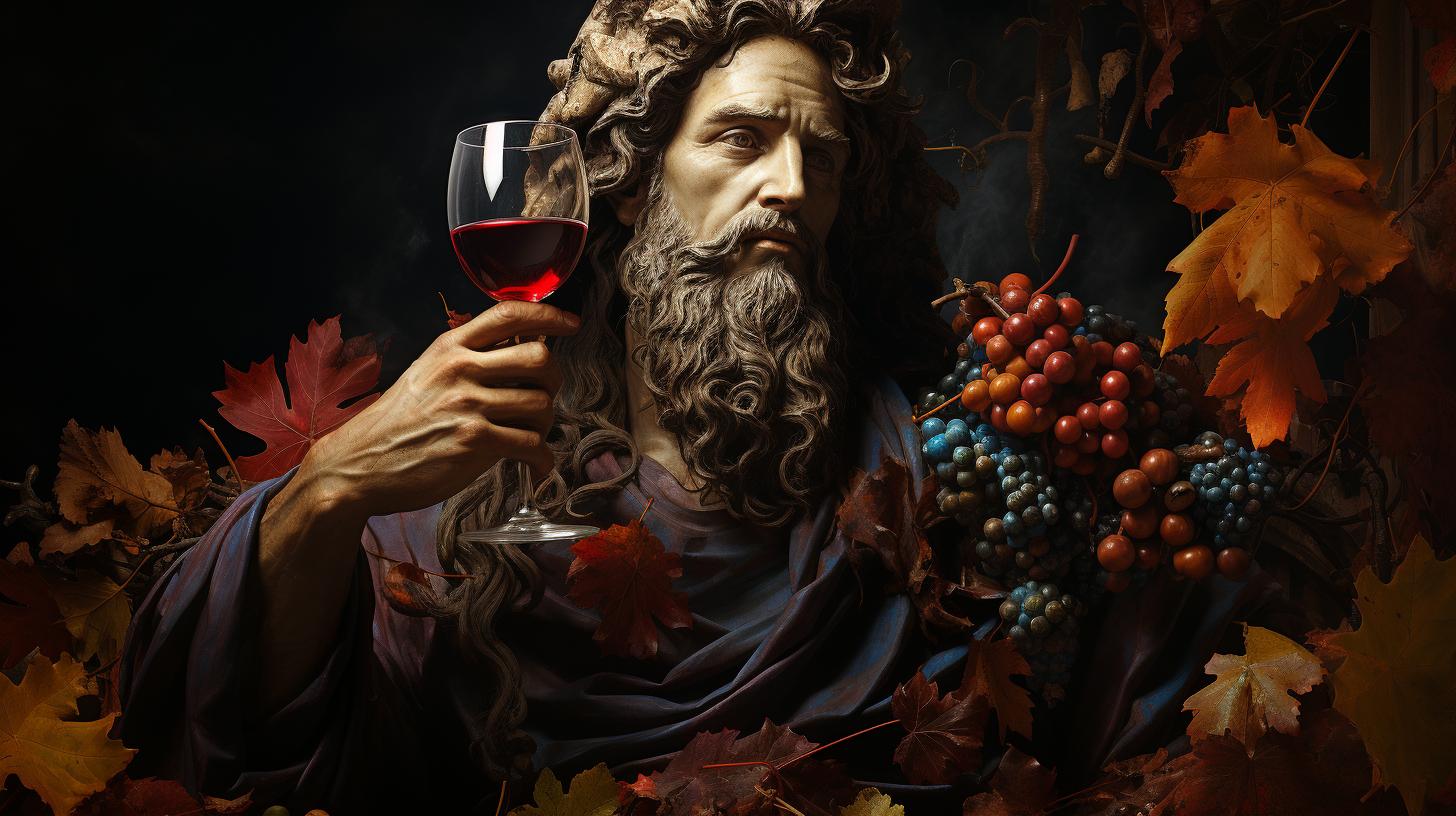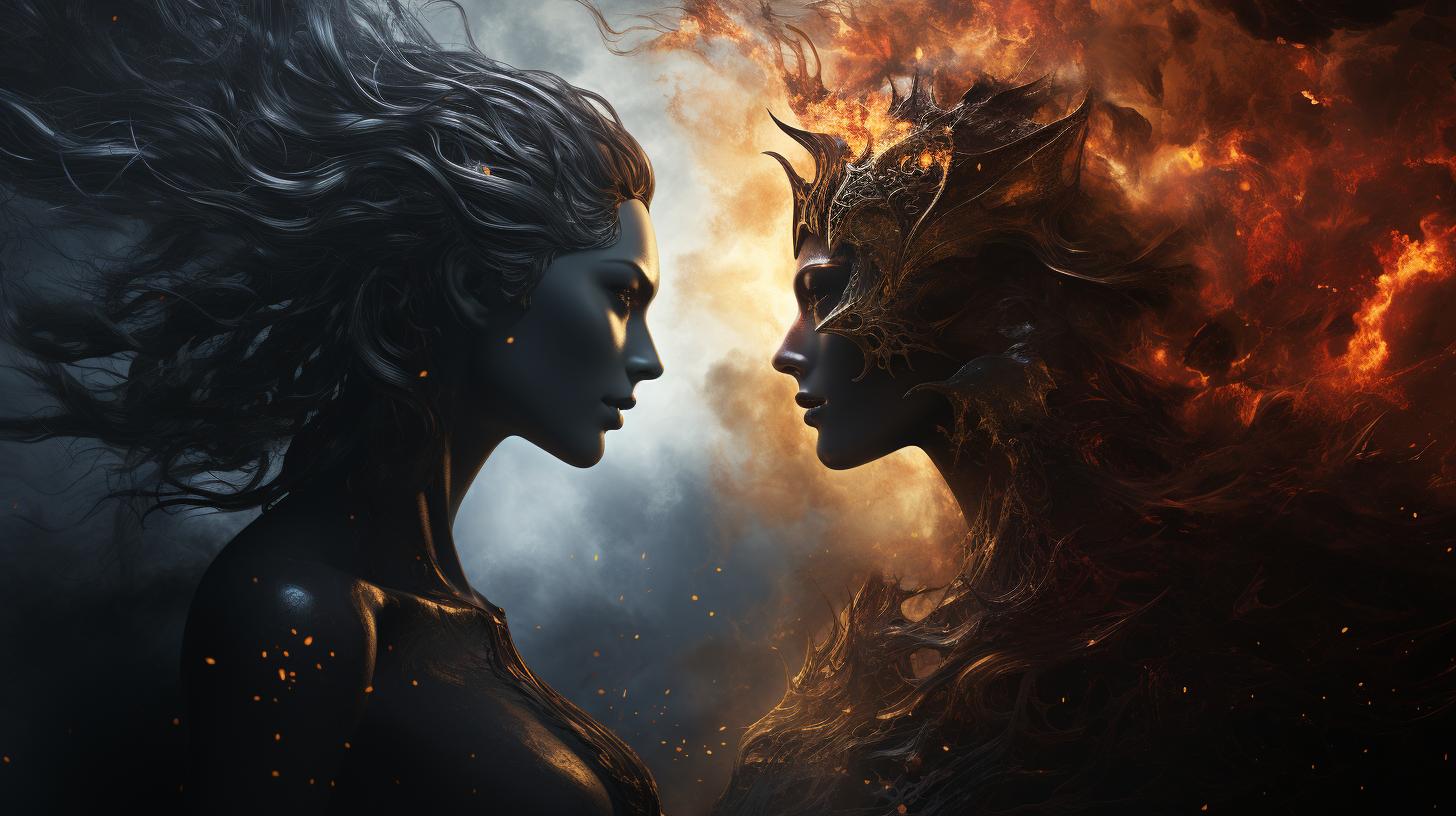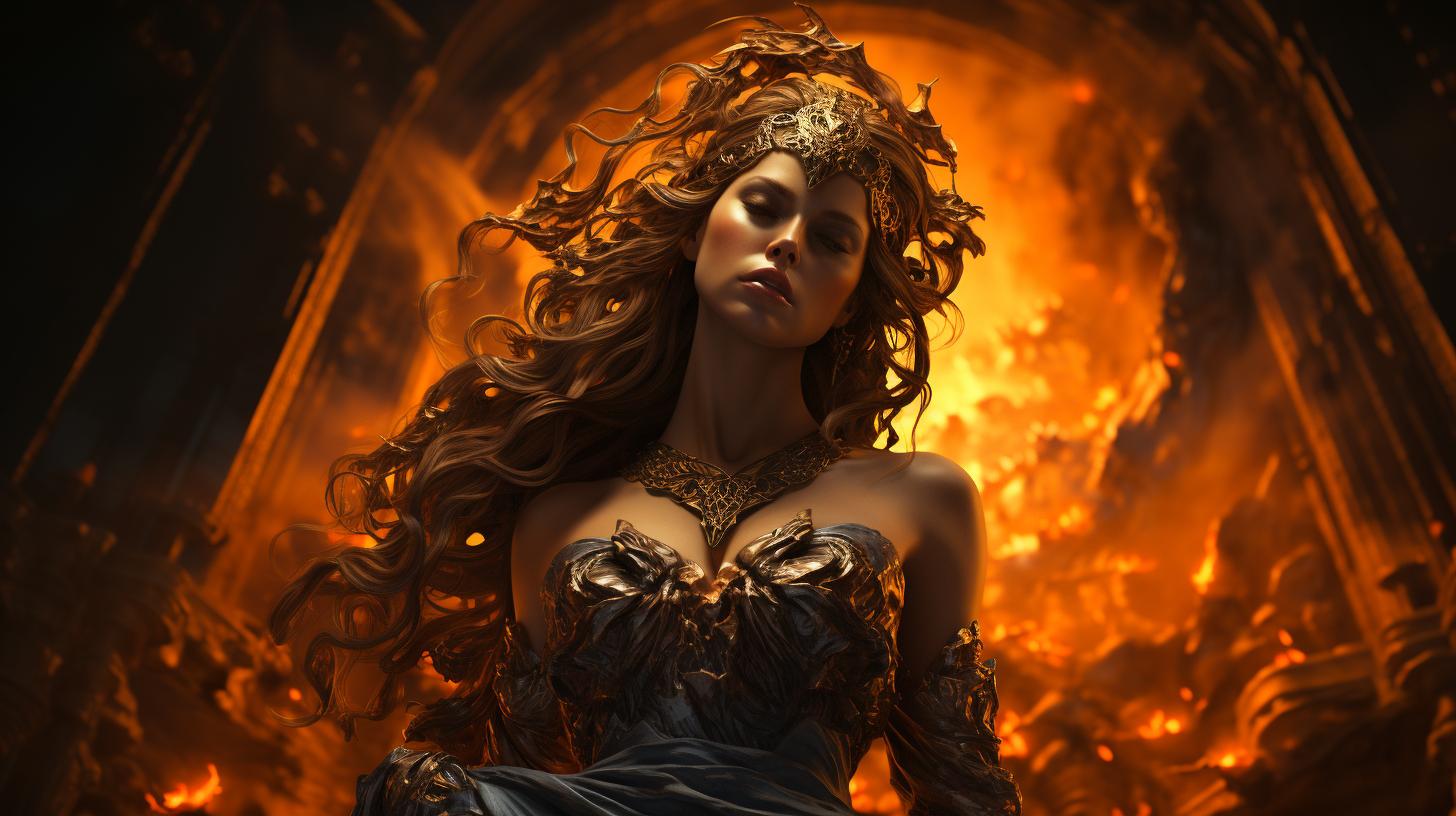The Greek Goddess Artemis Story: Mythology, Symbols, and Legends

Artemis, the Greek goddess of hunting and nature, was born as the elder twin of Zeus and Leto. Revered as a virginal deity, Artemis helped her mother give birth to her brother Apollo, earning her reputation as the goddess of childbirth.
Associated with various spheres of influence, she protected young girls and women and favored the Trojans in the ancient Greek literature, causing animosity with Hera. Depictions of Artemis show her with sacred symbols like the bow and arrow, a quiver, and her sacred animal, the deer.
Stories of her wrath, such as the myth of Artemis and Actaeon, highlight her powerful vengeance. Worship of Artemis played a significant role in ancient Greek society with numerous temples and rituals dedicated to her.
The Birth of Artemis and Her Twin Brother Apollo
Artemis, the Greek goddess of hunting and nature, was born as the twin sister of Apollo. Their mother, Leto, faced numerous struggles during her pregnancy, as she was relentlessly pursued by the jealous Hera. Leto’s only solace came from the support of Zeus, who played a crucial role in protecting her and ensuring the safe delivery of their divine children.
Leto’s Struggles and Zeus’ Involvement
Leto’s journey was not an easy one. Hera’s wrath and relentless pursuit made it increasingly difficult for Leto to find a safe place to give birth. She wandered from land to land, facing rejection and fear from mortals who feared Hera’s retribution.
Leto finally found refuge on the island of Delos, a floating island protected by Poseidon.
Intrigued by Leto’s beauty and desperateness, Zeus took action and quickly came to her aid.
He concealed her from Hera’s watchful eyes and, with his divine powers, secured her safety on Delos. Zeus’ intervention ensured that Leto could bring forth her divine children without further interference from Hera.
Artemis’ Role in Assisting with Apollo’s Birth
At the moment of Artemis’ birth, she already exhibited her intrinsic nature as a protector and nurturer.
While still a newborn herself, Artemis assisted her mother in the labor and delivery of her twin brother, Apollo. This act solidified Artemis’ reputation as a goddess of childbirth and earned her the title of the divine midwife.
Artemis displayed an uncanny wisdom and skill beyond her years, guiding and supporting Leto through the pains of labor. Her presence brought comfort and reassurance, providing a serene atmosphere for the birth of Apollo. This selfless act demonstrated Artemis’ loyalty and profound connection to her family.
The birth of Artemis and her twin brother Apollo marked the beginning of their extraordinary destinies. While Apollo would become the god of music, poetry, and prophecy, Artemis would establish herself as the revered goddess of hunting, protector of young girls, and a powerful force in Greek mythology.
Artemis, the Virgin Goddess
Artemis is widely recognized as the virgin goddess in Greek mythology, embodying chastity and purity. Revered for her unwavering dedication to remaining unmarried and abstaining from romantic relationships, she symbolizes the ideal of a self-sufficient and independent woman.
As the goddess of the hunt and nature, Artemis was revered as a role model for young girls and women. Her commitment to virginity set her apart from other deities and granted her a unique status within the Greek pantheon.
The Reverence for Artemis’ Chastity
Artemis’ chastity was highly respected and celebrated in ancient Greece. She represented the epitome of integrity and self-control, inspiring young girls to embrace their autonomy and inner strength. Devotees admired her as a paragon of virtue, providing a symbol of empowerment and liberation for those who chose to live their lives independently.
Artemis as the Protector of Girls and Young Women
Artemis was not only revered for her chastity but also revered as a protective deity for girls and young women. Worshippers sought her guidance and assistance in matters regarding female adolescence, fertility, and childbirth.
Acting as a guardian, Artemis ensured the well-being and safety of girls and young women, as they navigated the challenges of growing up in ancient Greek society.
Through her watchful eye and divine intervention, Artemis provided solace and protection during pivotal moments in a woman’s life journey.
Her association with the moon, often depicted as a crescent-shaped symbol, further solidified her role as a nurturing and guiding force in the lives of young girls and women.
The Symbolism of Artemis’ Virginity
- Represents independence and self-sufficiency
- Stands as a symbol of feminine strength and autonomy
- Embodies the ideals of purity and unyielding devotion
- Inspires young girls and women to embrace their individuality
Artemis’ Role as a Protector
- Guides and safeguards young girls and women
- Ensures their well-being during important life transitions
- Offers solace and assistance in matters of fertility and childbirth
- Symbolizes the nurturing and caring aspects of femininity
Artemis’ Associations and Titles
Artemis, the Greek goddess of hunting and nature, was associated with various spheres of influence throughout ancient Greece.
She embodied the concept of chastity and was revered as the protector of girls and young women. Let’s explore the different aspects of her associations and the titles bestowed upon her.
Artemis’ Sphere of Influence
Artemis’ sphere of influence encompassed several domains. As the goddess of the hunt, she was revered as Agroterê, the one who presided over hunting expeditions. She demonstrated her prowess and dominance over the animal kingdom as Pheraia, associated with wild beasts.
Artemis also played a crucial role in childbirth, being known as Orsilokhia, the helper in labor, ensuring safe deliveries for women.
The Many Names and Titles of Artemis
Artemis was known by various names and titles, each representing a different aspect of her divine presence. One of her most cherished titles was Aidoios Parthenos, the most revered virgin. This emphasized her commitment to chastity and her role as the protector of young women.
Other titles included Locheia, the goddess of childbirth, and Kynthos, associated with her sacred mountain, Mount Cynthus.
Furthermore, Artemis was linked to her brother Apollo through their shared power to bring diseases into the mortal world and cure them.
As Artemis Delia, she was associated with her birthplace of Delos, while as Hekate Cynthia, she was linked to the goddess Hecate and her attributes of magic and witchcraft.
- Agroterê: The goddess of the hunt
- Pheraia: Presider over wild beasts
- Orsilokhia: Helper in labor
- Aidoios Parthenos: The most revered virgin
- Locheia: Goddess of childbirth
- Kynthos: Associated with Mount Cynthus
- Artemis Delia: Linked to her birthplace of Delos
- Hekate Cynthia: Associated with Hecate and witchcraft
Artemis’ myriad of names and titles speaks to the depth of her influence and the multifaceted nature of her character as a goddess.
Symbols and Sacred Animals of Artemis
Artemis, the Greek goddess of hunting and nature, is associated with various symbols and sacred animals that represent her power and influence. These symbols and animals hold significant meaning in her mythology and are integral to understanding her role in ancient Greek culture.
Artemis’ Iconic Symbols and Tools
Artemis is often depicted with her iconic symbols and tools, which highlight her divine attributes and authority. One of her most recognizable symbols is the bow and arrows, representing her skill and prowess as a hunter.
The bow and arrows emphasize her connection to the hunt and her ability to bring down her quarry with precision.
In addition to her bow and arrows, Artemis is often depicted carrying a quiver, displaying her readiness and preparedness for the hunt.
She is also associated with other tools and objects, including spears used for hunting, a torch symbolizing her role as a lunar goddess, and a lyre, reflecting her connection to music and the arts.
The Deer: Artemis’ Sacred Animal
The deer holds special significance as Artemis’ sacred animal. Frequently portrayed riding a chariot pulled by deer, Artemis is closely associated with these graceful creatures. The deer represents her affinity for the wilderness and her domain over the animal kingdom.
Artemis’ connection to the deer goes beyond symbolism; she is often depicted hunting alongside them, showcasing her ability to navigate the wild and thrive in nature. The deer exemplifies agility, swiftness, and grace, characteristics that align with Artemis’ own nature as a goddess of the hunt.
Other Sacred Animals and Birds Associated with Artemis
- Bears: The bear also holds significance in Artemis’ mythology, symbolizing her ferocious strength and protective instincts. She is sometimes depicted accompanied by bears, highlighting her role as a guardian.
- Birds: Artemis has an affinity for various birds, including partridges and pheasants, which are often depicted in her presence.
These birds symbolize her connection to nature and her ability to navigate both the sky and the earth.
- Cypress: Among the sacred plants associated with Artemis, the cypress tree holds significant importance.
Representing endurance and immortality, the cypress symbolizes Artemis’ eternal presence and connection to the natural world.
- Amaranth: Another plant sacred to Artemis is the amaranth, which represents everlasting beauty and immutability, reflecting her timeless nature as a goddess.
In summary, Artemis’ symbols and sacred animals encompass her divine attributes, emphasizing her role as a powerful goddess of hunting and nature.
The bow and arrows, the deer, and other symbols associated with Artemis provide insights into her strength, agility, and connection to the natural world.
Tales of Artemis’ Wrath and Vengeance
Artemis, the Greek goddess of hunting and nature, wielded a power that was not to be taken lightly. She was known for her fierce wrath and the retribution she would inflict upon those who crossed her or disrespected her realm.
In the ancient myths, several tales highlight Artemis’ vengeful nature, showcasing the consequences of offending her divine authority.
The Myth of Artemis and Actaeon
One of the most well-known stories is the myth of Artemis and Actaeon. Actaeon, a mortal hunter, stumbled upon Artemis while she was bathing with her nymphs. Unfortunately, he had the misfortune of laying eyes upon the goddess in her naked form, an unforgivable transgression.
In her fury, Artemis transformed Actaeon into a deer, and he was subsequently pursued and torn apart by his own hunting dogs, unaware of his former identity.
The Story of Calisto and Artemis’ Retribution
Another tragic tale revolves around Calisto, one of Artemis’ companions.
Zeus, burdened by forbidden desires, disguised himself as Artemis and seduced Calisto. When Artemis discovered this betrayal, she transformed Calisto into a bear as punishment for breaking her vow of chastity.
Separated from her human form, Calisto roamed the wilderness alone, forever distanced from her former life and companionship.
Niobe’s Tragic Fate as Punishment
Niobe, queen of Boeotia, dared to boast of her superior motherhood in the presence of Leto, the mother of Artemis and Apollo. Enraged by the arrogance and disrespect shown towards her mother, Artemis and Apollo embarked on a merciless retaliation.
The divine twins slew Niobe’s children, bringing devastation and grief upon her as a stark reminder of the consequences of hubris.
Summary
The stories of Artemis’ wrath and vengeance serve as cautionary tales, reminding mortals of the consequences that awaited those who defied her authority or disrespected her sacred boundaries. Actaeon’s tragic transformation, Calisto’s isolation as a bear, and Niobe’s devastating loss all underscore the immense power and fury of the Greek goddess Artemis.
These myths reinforced the reverence and fear with which the ancient Greeks regarded Artemis and her divine domain.
Depictions of Artemis in Ancient Greek Art
Depictions of Artemis in ancient Greek art offer a glimpse into the evolving representations of this revered goddess. Artists sought to capture her essence and convey her significance through various artistic periods.
Evolving Representations of Artemis
Throughout different artistic periods, Artemis’ portrayal underwent notable changes. In the Archaic period, she was depicted as the Queen of Beasts, often surrounded by predatory felines, emphasizing her role as the goddess of hunting and the wild.
During the Classical period, Artemis was commonly portrayed as the virginal goddess of nature. She was depicted wearing a tunic adorned with embroidered borders and various head ornaments. It was said that she was adorned in deer skin, carrying a quiver of arrows, and holding a torch and two snakes, alluding to her connection with the torchbearer goddess Hecate.
Artemis’ Attire and Iconography in Classical Period
In the Classical period, Artemis’ attire held symbolic significance.
The embroidered borders on her tunic represented her divine status and association with craftsmanship. Her choice of clothing emphasized her connection to nature and purity.
The intricate iconography surrounding Artemis included her iconic symbols and tools, such as the bow and arrow, quiver, hunting spears, torch, and lyre.
These representations honored her role as the goddess of hunting, childbirth, and protector of young girls and women.
Roman Influence and Equivalence with Diana and Selene
During the Roman period, Artemis became closely associated with Diana, the Roman goddess of hunting and the moon. This assimilation brought about a connection between Artemis and Selene, the Greek goddess of the moon.
Artemis’ depictions reflected this association, with some artistic representations merging her attributes with those of Diana and Selene. The Roman influence introduced new elements to Artemis’ image and expanded her influence as a goddess.
- Overall, Artemis’ depiction in ancient Greek art showcases the evolution of her portrayal, capturing her multifaceted essence as the goddess of hunting, nature, childbirth, and protector of young women.
- Artists conveyed her significance through evolving representations and symbolic iconography, highlighting her connections to the divine, the wild, and the moon.
This ancient artwork not only offers a visual record of Artemis’ importance in ancient Greek society but also provides insights into the cultural and religious beliefs surrounding this powerful goddess.
Worship and Temples Dedicated to Artemis
Worship of Artemis was widespread throughout ancient Greece, and she held a significant position in the religious beliefs of the people. Her devoted followers built numerous temples and sanctuaries dedicated to her worship.
The Widespread Devotion to Artemis
The reverence for Artemis extended to various regions of Greece, with notable centers of worship in cities such as Ephesus, Brauron, and Delos. Her popularity transcended social boundaries, as both the aristocracy and commoners participated in her religious rituals and celebrations.
Rituals and Practices in the Worship of Artemis
Devotees engaged in elaborate ceremonies and rituals to honor Artemis, which often included processions, sacrifices, and prayers. Priestesses, known as “Artemis’s nymphai,” played a vital role in overseeing these rituals and maintaining the sanctity of Artemis’s worship.
- Processions: Followers would march in grand processions, carrying sacred objects and paying homage to Artemis.
- Sacrifices: Animals, such as deer or goats, were offered as sacrifices to appease and seek the favor of the goddess.
- Prayers and Offerings: Worshipers would offer prayers and make various offerings, including votive gifts such as statues, jewelry, and figurines.
- Festivals: Festivals dedicated to Artemis, such as the Brauronia in Brauron, involved athletic competitions, theatrical performances, and religious rites.
Artemis’ Prominence in Ancient Greek Society
The influence of Artemis extended beyond religious spheres and had a profound impact on ancient Greek society.
Artemis was regarded as a symbol of female empowerment and played a significant role in the rites of passage for girls and young women.
Her status as a guardian and protector of women resonated deeply in a society where gender roles were clearly defined.
Her association with childbirth and her ability to alleviate diseases further reinforced her position as a revered deity.
The worship of Artemis contributed to the cultural and social fabric of ancient Greek civilization.
The temples dedicated to her served as gathering places for both religious and community activities, fostering a sense of unity among the people.
Artemis, with her multifaceted symbolism and vengeful nature, held a significant place in the hearts and minds of the ancient Greeks, leaving an enduring legacy of devotion and reverence.
.












